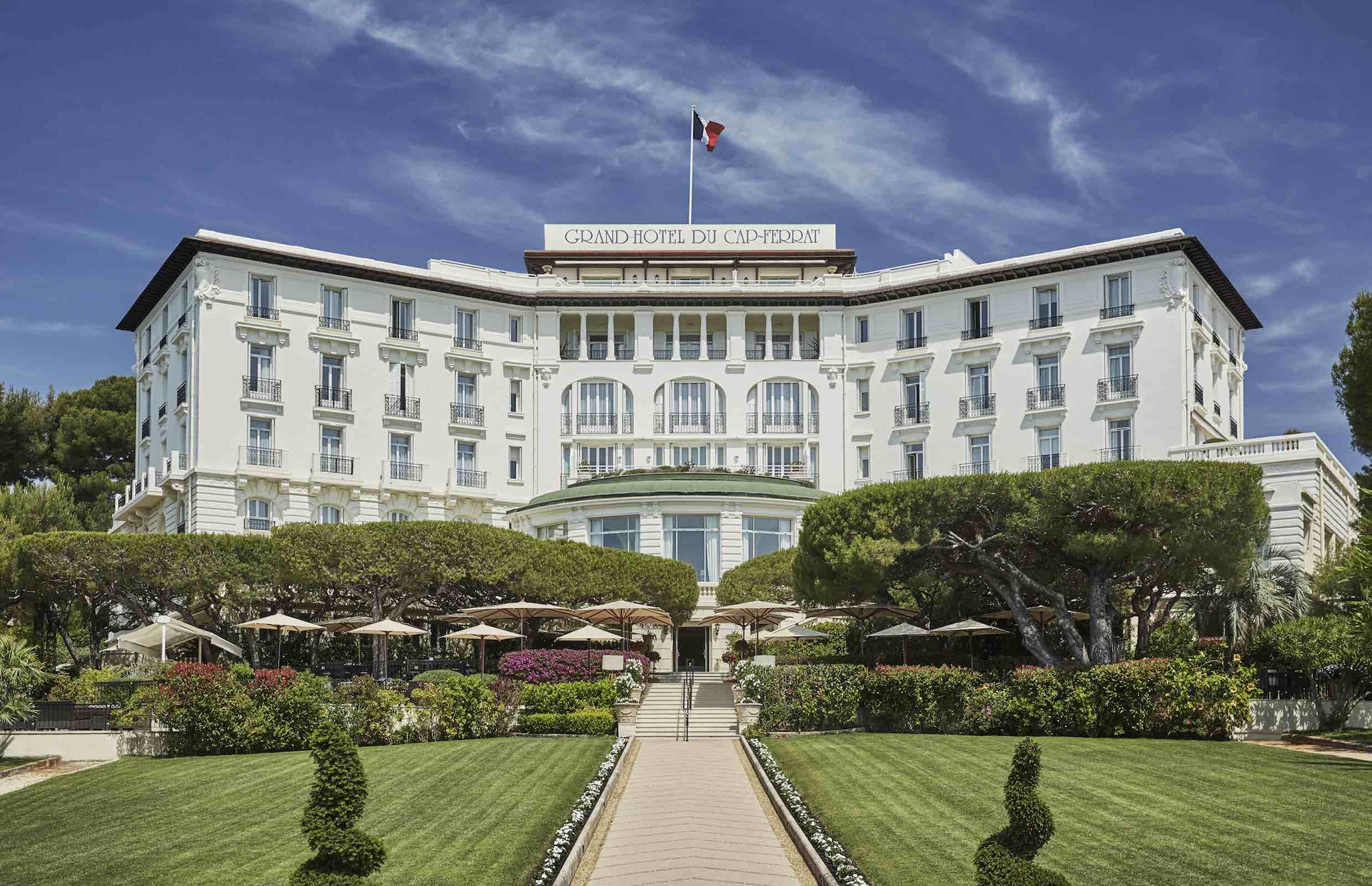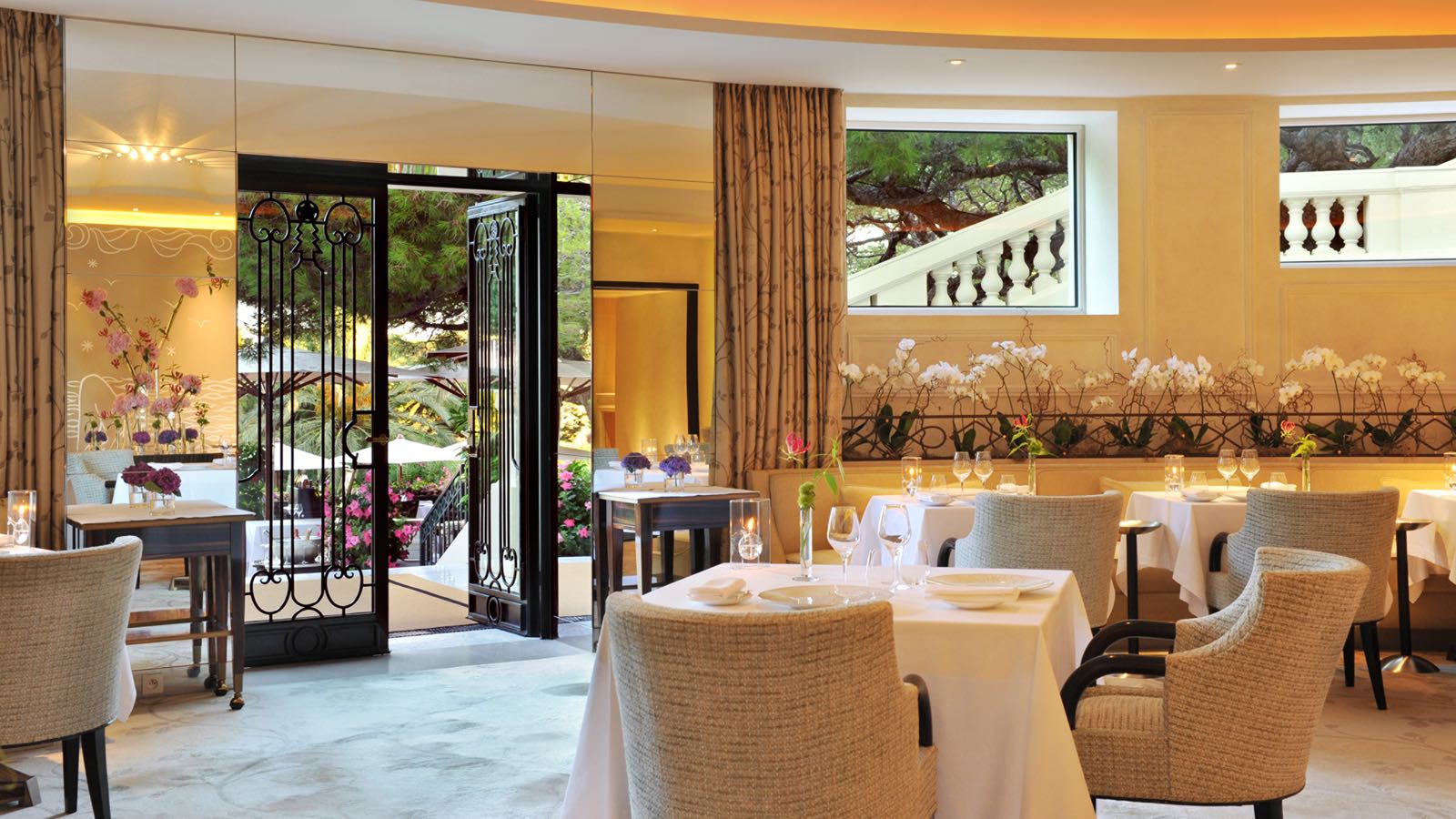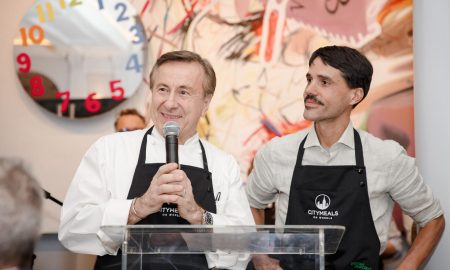 Photo Credit: Four Seasons Hotels and Resorts
Photo Credit: Four Seasons Hotels and Resorts
Situated on top of the of the ethereal Saint-Jean Cap-Ferrat rests the newly-restored Grand-Hôtel du Cap-Ferrat, A Four Seasons Hotel. The iconic property holds a century of history under its roof dating back to its opening in 1908 where guests like Elizabeth Taylor and Winston Churchill graced its grounds. Evoking glamour in every crevice of the stunning, sprawling property overlooking the Côte d’Azur, managed since 2015 by the prestigious Four Seasons group has successfully captivated the history and culture of the original property, while adding touches of luxurious modernism with competitive amenities, breathtaking suites and world-class dining.
Part of the transformation included revamping the Five-Star Hotel’s culinary offerings. Bringing on Michelin-starred chef Yoric Tièche was a key factor in this process, as he introduced three new dining concepts, each with their own identity and unique offerings—Le Cap, La Véranda and Le Club Dauphin. In each dining destination, the expert chef is able to maintain the identity and of the prestigious hotel and its key location, utilizing local ingredients of the Côte d’Azur and particularly the Saint-Jean Cap-Ferrat area, and offers innovative menus in unique atmospheres to complement the dining experience and take guests on an extraordinarily memorable culinary journey.
 Photo Credit: Four Seasons Hotels and Resorts
Photo Credit: Four Seasons Hotels and Resorts
Here, Haute Living sits down with the acclaimed, 41-year-old chef Yoric Tièche to discuss the beauty of each dining destination, and the very special Le Cap fine dining experience that must not be missed. On this particular evening, Chef is preparing for an extraordinary, seafood tasting menu highlighting decadent ingredients of the moment including a perfectly-rounded Mediterranean Sardines dish topped with Oscietre Caviar; Spring Vegetables complemented with Pistes Calamari and Red Mullet; and a Butter Roasted Blue Lobster highlighted by generous pieces of Lobster knuckles in a creamy sauce with a refreshing tomato and watermelon salad. Find out what other tricks the master chef has up his sleeve here as he reveals the magic that goes on behind the scenes:
HL: Tell us about each of the three dining concepts of the property and how they differ in cuisine, atmosphere/decor and overall experience.
YT: Fist, we can start with La Véranda. This is a very special concept to me because it’s a bistro-chic restaurant where we can really bring the flavors out in simple, French food of outstanding quality. I wanted it to be the type of place you could eat at every night, and it’s a great option for families to bring their children. The atmosphere is easy-going, relaxed but incorporates amazing food. The clientele there is about 50-percent locals and 50-percent hotel guests, which is great. And then we have Le Club Dauphin, which is our poolside restaurant. This is only open for lunch, but it’s extremely busy from July-August. We offer a lot of salads, whole fish like Seabass or Lobster and specials rotating every day. We like to provide light food since it’s at the pool and people like to eat healthier there. We are also very accommodating to people with dietary restrictions, offering plenty of vegan and vegetarian items on the menu. And then Le Cap is a completely different experience. It’s fine dining, located on the Upper Terrace of the Hotel. This is where I can really experiment and get creative with the cuisine, utilizing local ingredients with rotating menus about three times from May-August.
 Photo Credit: Four Seasons Hotels and Resorts
Photo Credit: Four Seasons Hotels and Resorts
HL: Le Cap is the signature restaurant. What sort of changes did you make to have it be your own and make it special for the guests?
YT: We really tailored every aspect of the whole experience. In the summer months, we wanted the dining to take place on the terrace. As it cools down, we have the indoor dining room of Le Cap adjacent to the terrace. We tailored all of the furniture with tones of red, with fine china to match. We have an ongoing rotating tasting menu—at the moment we are focusing heavily on fish since that is the freshest and diverse ingredient available to us. And we incorporate lots of fresh vegetables and ingredients from the neighboring areas.
 Photo Credit: Four Seasons Hotels and Resorts
Photo Credit: Four Seasons Hotels and Resorts
HL: What was the biggest challenge of restoring such a historic property as this?
YT: One of the concerns with the Cap, when we took it over, was that it had a very French Palace feel—it still does, but we took a more modernized approach with the team. You’ll find that our entire team is quite young and energetic. There’s a very genuine and dynamic approach to our service—this was a key message that everyone wanted to convey—however, we don’t compromise on service quality. We’re just bringing a young and fresh take on it.
 Photo Credit: Four Seasons Hotels and Resorts
Photo Credit: Four Seasons Hotels and Resorts
HL: What was one of the key factors to your success with the new culinary program here?
YT: Our team in the kitchen. It’s the most important factor—if you don’t have a good team, no matter how good your food is, you won’t bring a great experience. When I came on, I brought a lot of my staff with me but the problem is in seasonal places like this when we close in the winter, you lose some of your staff for the off months. So it’s very important to have good relationships and be able to call people in to come back in March. I am lucky to have such a great network of fellow chefs so that we can work together. While the culinary industry is very competitive, even as a hotel, it’s important to have key relationships to develop these teams. Because of this, you get very high-quality staff members that are invested in their work. It makes all the difference. If you want to succeed today, you need to be well-connected and do a lot of community work.
























